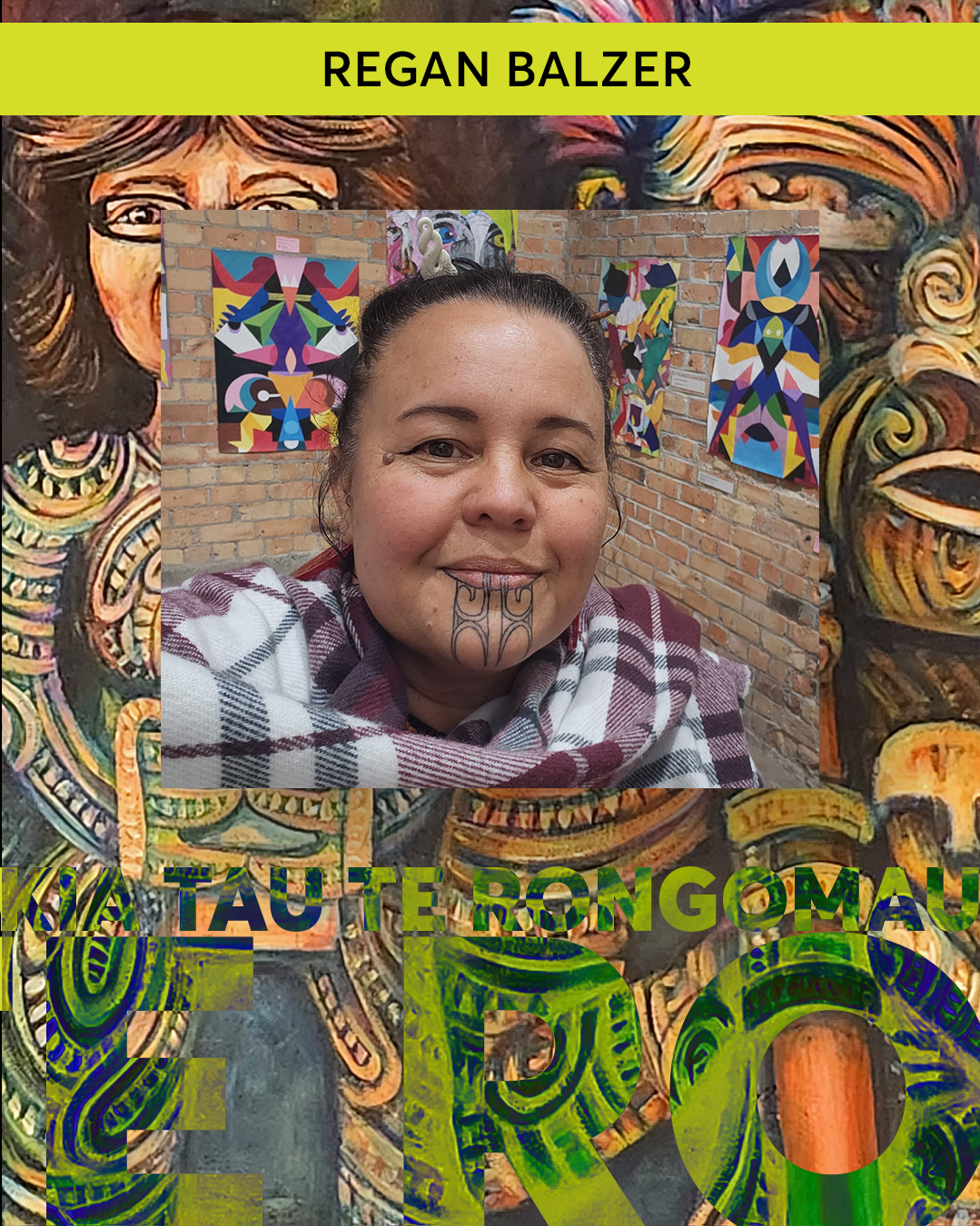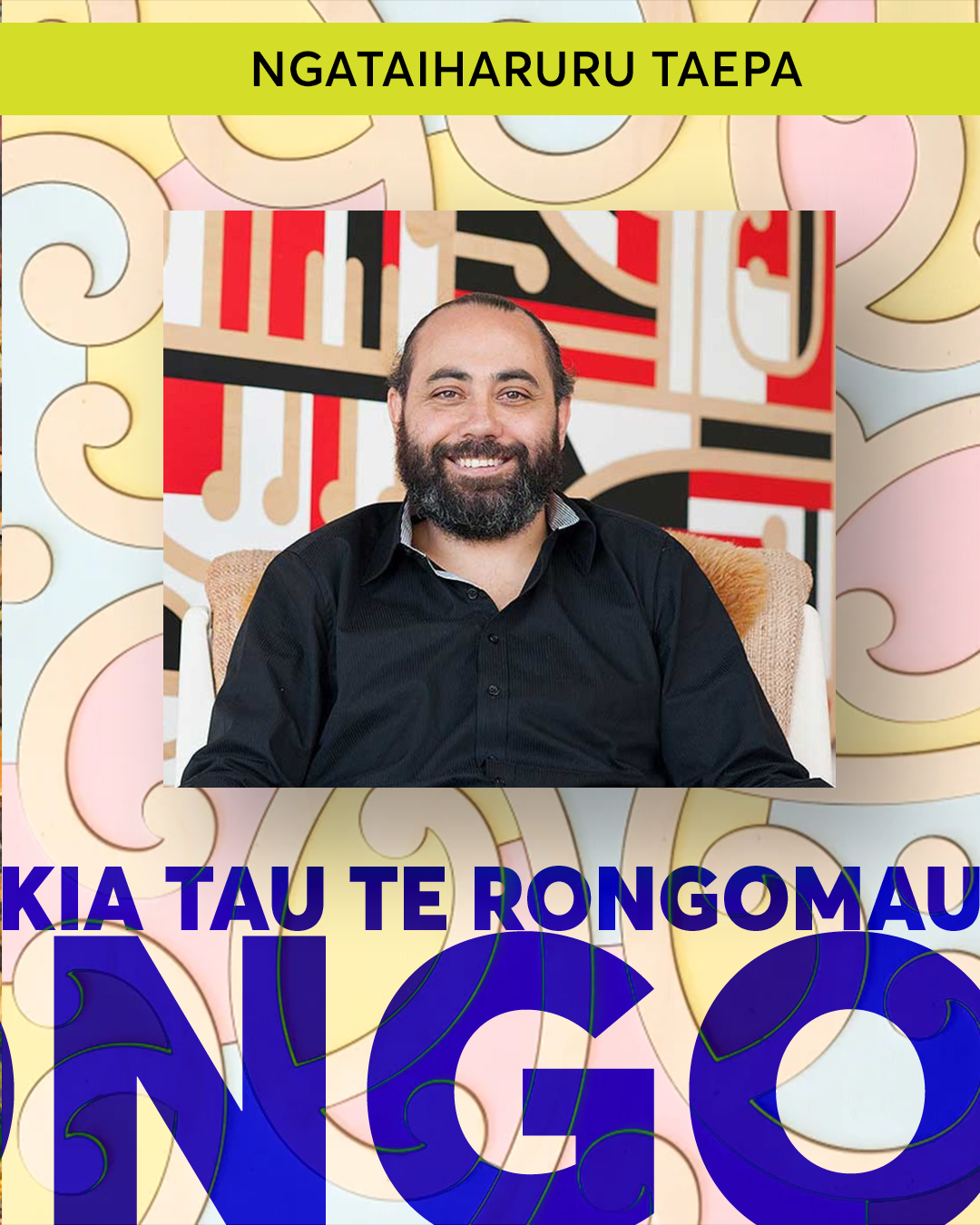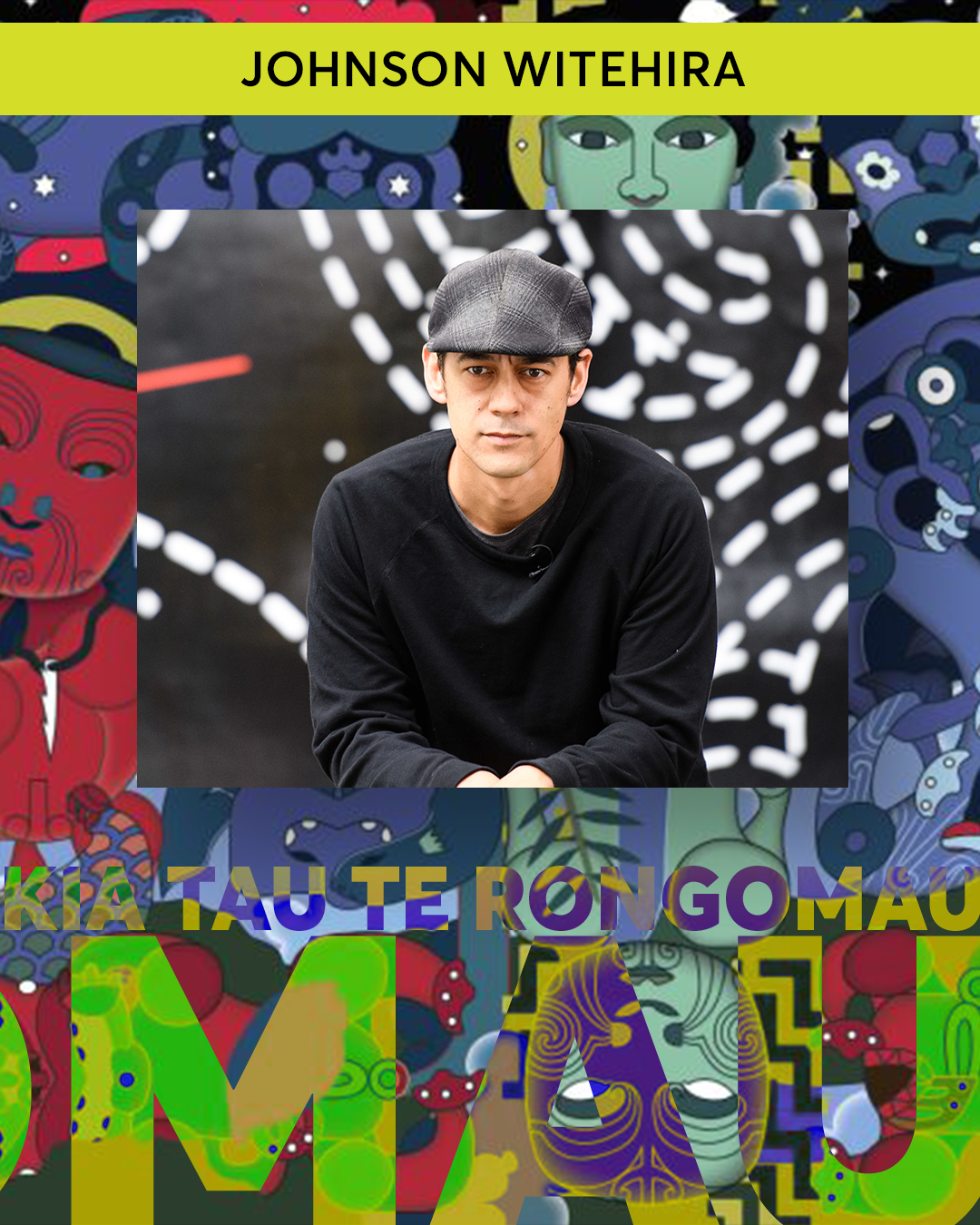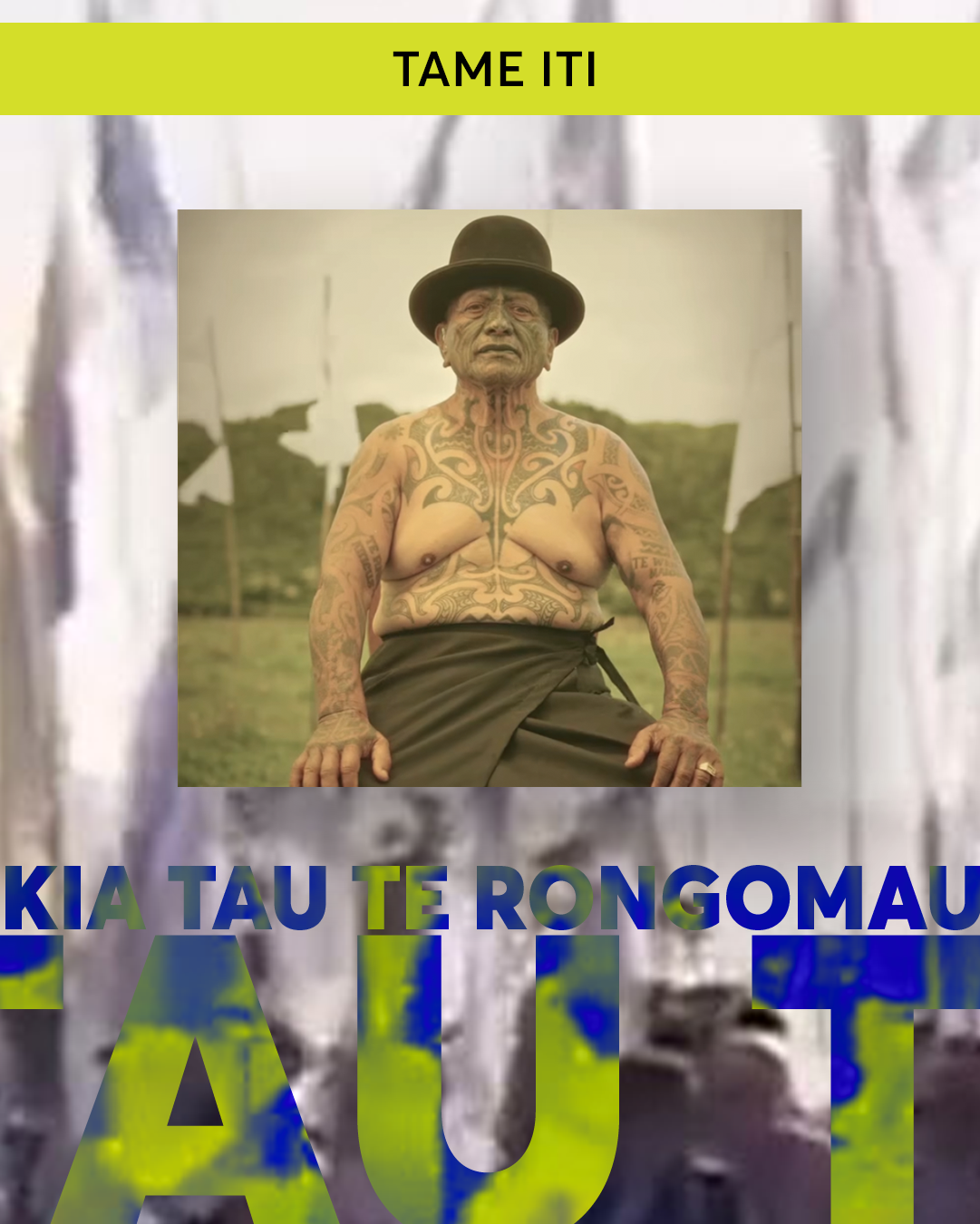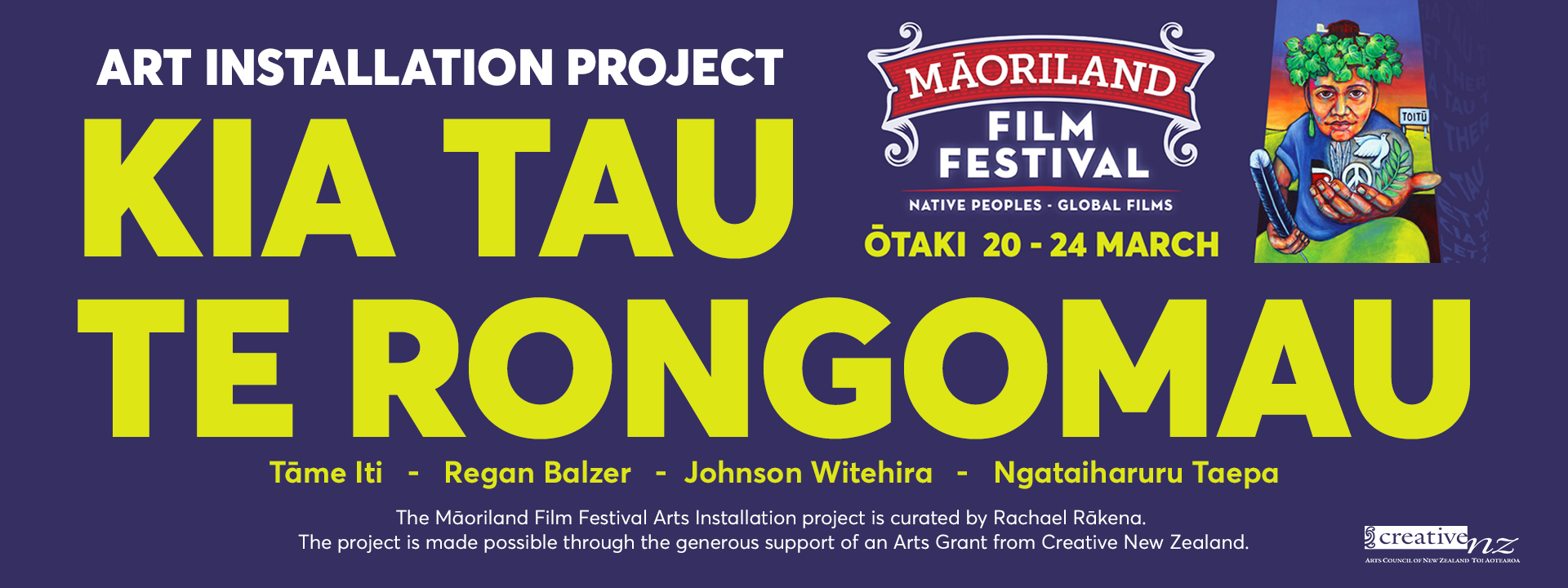

Kia Tau te Rongomau – Art Installation Project
The Māoriland Film Festival Arts Installation project is curated by Rachael Rakena (Ngāi Tahu, Ngā Puhi) , Rachael coined the term ‘Toi Rerehiko’ to name her digital/video/electronic-based art practice within a Māori paradigm, which she describes in terms of continuum, motion, and collaboration. Water has been the defining feature of her artwork since the early 1990’s and it is located as an indigenous space, contextualised in Te Moana nui a Kiwa (the Pacific Ocean). Known for her collaborative practice, she exhibits internationally and locally. Highlights include the Aniwaniwa at 52nd Venice Biennale and Sakahàn: International Indigenous Art at NGC in Ottawa. She co-conceived and co-curates Mana Moana, a public art platform that explores indigenous relationships with water, and is a founding member of Paemanu, a Ngā Tahu artists collective. She is also an Associate Professor at Massey University Whiti o Rehua School of Art in Wellington.
The project is made possible through the generous support of an Arts Grant from Creative New Zealand.
Regan Balzer (of Te Arawa, Ngāti Ranginui, Raukawa and Apakura, Scottish and Irish descent) has exhibited extensively both locally and internationally. Inspired by her upbringing in Rotorua, New Zealand, known for its sulphuric landscape and vibrant natural colours, Regan’s paintings reflect the rich hues of her homeland. She intertwines customary imagery with contemporary contexts, creating visually captivating narratives. Regan’s artistry involves applying detailed and expressive layers of paint, allowing elements to either blend seamlessly or boldly stand out. Her work draws from traditional Māori arts practices like woodcarving and weaving, infusing them into her pieces to make comment on local and global issues affecting her community and beyond.
Ingoa Toi / Title: ‘Toitū te Rongomau’
Regan painted this year’s cover image for the festival ‘Kia tau te Rongomau : Let there be peace’ and an associated street installation ‘Toitū te Rongomau’.
These works are a response to the current state of discontent, destruction or war on Papatuanuku.
Many different elements of Maori history have been considered in regards to what peace looks like and how peace has been achieved and maintained. Through this lens, the images present many ways of peace and encourage the viewer to choose peace as a way forward.
In the cover image, the wahine (female) in the image is in a stance of placing the ‘wero’, this is when the ‘rau’ (opportunity to show peace) is laid before the manuhiri. This highlights the opportunity to take up the ‘wero’ (or challenge) to work together as friends, not foe. She holds out to the viewer a dove, the olive branch, the Parihaka peace feathers and the International symbol for peace. She wears a blanket like those used in trade, and wears the ‘tatau pounamu mere’ in her ear, both used to solidify peace between parties. The Parekawakawa she wears on her head acknowledges the tears that have been shed, the grievances, the land, language, culture and people that have been lost. The huia feather signifies the importance of this kaupapa, ‘He kaupapa ariki’ and also a reminder of how things that are precious to the sustenance of the people needs to be cherished, and maintained in case they are lost, as the Huia bird was.
In the street installation, ‘Toitū te Rongomau’, the portal space painted on the museum building street frontage is envisaged as a peace activation. We are encouraged to work towards and embrace activities that promote peace and wellbeing amongst people and Te Tai Ao (environment).
The artist invites people to share and spread the message of peace through social media with selfies tagging #maoriland
Toitū is our stance, our protest and proclamation: ‘Toitū te whenua, Toitū te Tiriti, Toitū te Reo, me Toitū hoki te Rongomau’ The land is here forever, so too will our Tiriti remain, our language and peace.
Kei Whea / Where: Museum building, 49 Main Street, Ōtaki
Painting assistants: Ruahine Harmer & Horomona Horo
Professor Ngatai Taepa (Te Arawa, Te Āti Awa) a contemporary Māori artist with connections to Ōtaki through his kaumātua, Canon Hohepa Taepa and Laura Taepa ne’ Black.
Taepa has produced an impressive body of work that combines indigenous concepts with contemporary expression. He has fashioned a unique identity for himself in his exploration of the relevance of kōwhaiwhai painting today.
His current practice also includes installation works that look at contemporary issues within Aotearoa and his audio work “Ō taki kia tau te Rongomau” encourages a collective consciousness towards peace and wellbeing.
Ingoa Toi / Title: “Ō taki kia tau te Rongomau”
“Ō taki kia tau te Rongomau” is an audio work that allows us to pause, and give thought to the theme of this year’s Māoriland Festival “Kia tau te Rongomau” (Let there be peace). The work broadcasts taki at various intervals during the day that contain new compositions that draw on ancestral Karakia (Māori ritual). The intention is to create moments of collective consciousness that allows the community to give thought and consideration to Te Pani, those who are in times of distress, hardship and bereavement. The work engages ancestral frequencies that together with thought and intention have the potential to bring about Rongomau both here in Aotearoa and abroad….kia aio te pō, kia aio te ata, kia aio te ao marama…kia tau a runga, kia tau a raro, kia aio te noho.
When you hear this work we ask you to stop for a moment and consider those who are in times of distress in order to contribute to a collective consciousness of peace and wellbeing.
Kei hea / where: The taki will be broadcast from the sculptural waharoa at the Main Street entrance to Māoriland Hub, and along the street toward the beach.
Collaborators
Kura Moeahu – Kai Ruruku (Composer and performer)
Mari Ropata-Te Hei – Kai Karanga (Composer and performer)
Horomona Horo – Taonga Puoro (Composer and performer)
Josh Parata – Sound Engineer and Sculptor Assistant
Maungapohatu Taepa – Sculptor Assistant
Ngā mihi / Acknowledgements: Ngati Raukawa, Libby Hakaraia & Tainui Stephens, Māoriland Staff, Rawiri Rikihana, James Coyle, Faudlings Sound, Michael Lloyd
Johnson Witehira (Tamahaki, Ngāi Tuteauru) is recognized as an expert on contemporary Māori art and design. His art and design practice focuses on how customary Māori knowledge and ways of thinking can be applied in contemporary settings. Witehira’s artworks have been shown in many of New Zealand’s leading galleries including ObjectSpace, The Wellington City Gallery, The Physics Room and The Dowse. Witehira has also worked extensively with curators across Canada and Australia, with his works featuring in Nuit Blanche (Toronto), The Banff Centre for Arts and most recently at ACMI (Melbourne).
Ingoa Toi / Title: Mana Tūpuna
Step into the mystical realm of Mana Tūpuna, where ancient Māori gods are reborn through Augmented Reality. Customary Māori storytelling meets cutting-edge technology in this immersive experience, which sees ancestral figures emerge as dynamic beings. The atua interact as in the house of Tangaroa, with the wairua of each sparked from within and by one another.
The Pū Rākau blocks are designed to connect us with Māori narratives in an interactive and playful way, keeping these important stories alive through play. Mana Tūpuna invites participants to engage with the rich cultural heritage of Aotearoa.
Kei Whea / Locations: Cubed lightboxes have been constructed and installed as ‘pou’ throughout the Māoriland Film Festival, depicting sixteen atua whose narratives will be activated using the Pū Rākau AR app. The atua have also been printed on banners for the Ngā Purapura theatre, where their narrative interactions with each other can be activated.
Download the Pū Rākau AR app to your device to see these narratives
Design – Jamie Prier Sound – Horomona Horo.
Build – Brendan Knight. Lighting – Joseph Ivory
Animation – Ethan Wimsett Plinths – Ryan Baker
Tāme Iti (Ngai Tūhoe, Te Arawa, Waikato) is an artist, actor, poet, entrepreneur, beekeeper, gardener, father and grandfather with a bone-deep commitment to his practice. Throughout his life he has used creativity as a vessel for change – moving fluidly between disciplines and genres with a vision that has resonated across decades. From shooting a national flag on government grounds to collaborating with some of Aotearoa’s greatest artists. Tame is a constant innovator, pushing boundaries to tell indigenous stories on a world stage.
The impact of Tame’s practice is immeasurable; from his art studio in Whakatane that doubles as a community hub to the political works that have changed the course of history in Aotearoa.
Ingoa Toi / Title: Te Maungārongo
Te Maungārongo, conceptualised by Tāme Iti, stands as a continuation of the dialogue initiated by his landmark Haki Ātea performance in Waitangi on February 5, 2024, that saw Iti leading a hīkoi with hundreds of supporters across the Treaty Grounds, each carrying white flags as symbols of a new beginning and a call for innovative approaches to Māori protest and rights assertion.
In Te Maungārongo, the flags from the Haki Ātea performance and the scaffolding structure that previously featured in Tame’s Tawharautia Mataatua performance (in partnership with the NZSO and Te Whare Wānanga o Awanuiārangi), find new life and meaning. Set against Otaki’s cultural tapestry, this installation invites the community to engage with the narratives of resilience, protest, and hope carried from Waitangi and Mataatua, reinforcing the importance of collective action in the pursuit of change and understanding within and beyond the Māori community.
Kei Whea / Location: Between the Ōtaki War Memorial and Civic Theatre, 9-13 Main Street, Ōtaki
Te Mira Collective. Artist – Tame Iti
Producers – Wairere and Toi Iti. Art Assist – Ati Teepa
Photography – Moaho Social Media and Merch – Tash George
